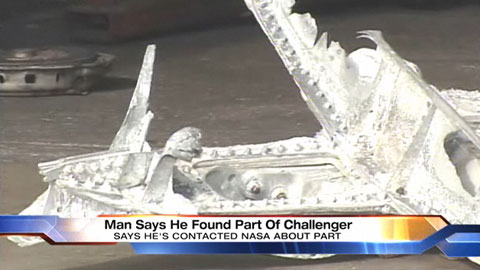
This shows that an O-ring failure was sure to happen when the launch temperature was that cold (31☏). from jet fighters and even pinpointed the remains of Challenger space shuttle. P(Y_i = 1|x_i) \approx \frac \approx 0.99961\). Normalization of deviance, the process of becoming inured to risky actions, is a useful concept for today that was developed to explain how the Challenger di. Weve learned about the military applications of a nuclear submarine. This gives the estimated model for \(\pi_i\) as \[ II 11 Mission 51 - L will offer history - making educational opportunities - two lessons taught live from the Challenger by Teacher in Space Christa. (Dispersion parameter for binomial family taken to be 1 ) Null deviance: She rode to space aboard the the space shuttle Challenger for. chall.glm 0 ~ temp, data=Challeng, family=binomial) On June 18, 1983, physicist Sally Ride (1951-2012) became the first American woman and 3rd woman of all time to go into space. The estimates of the coefficients \(\beta_0\) and \(\beta_1\) for the above logistic regression model and data are shown below. The “temp” column lists the outside temperature at the time of launch. The “fail” column in the data set below records how many O-rings experienced failures during that particular launch. In the following analysis we demonstrate more fully how dangerous it was to launch on this specific day where the outside temperature at the time of the launch was 31°. The “evidence” that the o-rings could fail below 53° was based on a simple conclusion that since the launch at 53° experienced two o-ring failures, it seemed unwise to launch below that temperature. Engineers prior to the Challenger launch suggested that the launch not be attempted below 53°. Some of that is down to a common issue with any brick.


This is evident in the data set shown below. The Engino Challenger Space Shuttle is the kind of build that starts out a ton of fun and then steadily becomes more, well, challenging. The lowest temperature of any of the 23 prior launches (before the Challenger explosion) was 53° F 2.

From left to right, the astronauts are Christa McAuliffe, Gregory. hoped would be a drama of space shuttle achievement quickly turned into a. The main concern of engineers in launching the Challenger was the evidence that the large O-rings sealing the several sections of the boosters could fail in cold temperatures. The crew of the space shuttle Challenger's STS-51L mission, which ended in tragedy shortly after launch on Jan. Broken door handle delays Challenger launch on 27 January 1986 Frozen part.


 0 kommentar(er)
0 kommentar(er)
